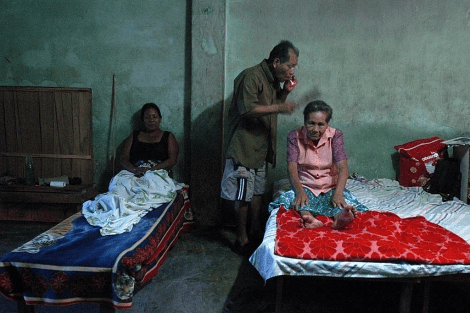
Witchcraft, Bullets, and Resistance: The Untold Story of the Shamans Killed in the Amazon
Explore the story of the 14 Shawi shamans murdered in the Peruvian Amazon and how it reflects our disconnection from the ancestral.
Edú Saldaña
2/11/20253 min read


The Invisible Struggle of the Guardians of Knowledge
Who killed the healers of the Amazon? It’s not the title of a mystery novel, but it should be. Back in 2011 alone, at least 14 shamans from the Shawi community were murdered in a remote corner of Peru. The reason? Extremist religious beliefs, land disputes, and at its core, a battle for control over ancestral knowledge. Today we explore this dark chapter and what it reveals about our disconnection from Indigenous cultures. Is witchcraft just an excuse—or is the real enemy change itself?
Shamans Targeted in a War of Beliefs
In the Shawi community, being a healer can be a one-way ticket to danger. According to reports, the evangelical mayor of Balsa Puerto, along with his brother known as the "witch killer," led a campaign to eliminate what they saw as “demonic practices.” The victims were accused of causing illness and infant mortality—as if the country’s public health crisis had nothing to do with it. It’s like blaming your router for the lack of internet when you didn’t pay the bill.
According to anthropologist Roger Rumrrill, this attack wasn’t an isolated case, but part of a sectarian and racist narrative used to legitimize violence. And here’s the paradox: shamans—guardians of health in a system neglected by the state—are being eliminated while trying to save lives.
To Be Shawi Is to Live Between the Human and the Non-Human
The Shawi have a way of understanding life that, to us—obsessed with to-do lists and Zoom meetings—might seem magical. In their worldview, illness is not just physical, but a sign of imbalance in their relationships with the environment. They believe shamans must navigate between worlds, negotiating with spiritual forces to heal their people. But for the "witch killers," these practices are seen as acts of heresy.
So, who’s right? Well, who would’ve thought that something as supernatural as the “Chullachaqui,” a dwarf with backward feet, might make more sense than our modern scientific explanations for chaos?


Is Witchcraft a Weapon or a Shield?
Anthropologist Luisa González Saavedra suggests that for the Shawi, illness is what defines them as human. In other words, what many see as a problem, they see as part of their identity. So, are shamans seen as heroes or threats? Maybe both. In this tug-of-war between predation and docility, the Shawi have learned to survive by being invisible—but that very invisibility makes shamans easy targets when they become too visible.
Here’s a joke to help digest that: What do a shaman and the Internet have in common?
They’re always saving lives, but no one appreciates them until they disappear.
Faith as a Tool for Manipulation
In regions of the Peruvian Amazon, fundamentalist Mennonite groups have established agricultural colonies that have deforested over 4,800 hectares of tropical forest. These groups recognize no law above the Bible, allowing them to push economic development without regard for legal limits or environmental impact.
They use their faith to justify the exploitation of nature, claiming they have a divine right to bend it to their agricultural activities. This mindset not only promotes deforestation, but also displaces local communities and destroys vital ecosystems.
Illegal Logging and Land Trafficking
Illegal logging in the Peruvian Amazon is often linked to a series of crimes that either enable the primary offense or help conceal it. These include document fraud, corruption, and violence against Indigenous leaders who defend their territories.
Fundamentalist religious groups, upon settling in the region, often collaborate with illegal logging and land trafficking networks. They use their influence to displace Indigenous communities, seize their lands, and exploit natural resources without restrictions.
Appropriation of Ancestral Knowledge
In addition to exploiting natural resources, these groups seek to appropriate the ancestral knowledge of Indigenous communities. Practices of shamanism and traditional medicine are viewed as heresy by these religious groups—often leading to the murder of healers in the Amazon.
Once taken, this ancestral knowledge is frequently exploited by the pharmaceutical industry without recognition or compensation to the original communities. It’s a form of biopiracy that strips Indigenous peoples of their cultural heritage and potential economic benefits derived from their traditional knowledge.
How Can We Reconcile Modernity with the Ancestral?
What if the real issue isn’t witchcraft, but our inability to respect what we don’t understand? As the world celebrates artificial intelligence, we forget that Indigenous communities have long been pioneers of their own kind of “natural intelligence.” Shawi healers don’t just heal bodies—they connect communities to their roots. If we eliminate them, what’s left of us?
Kunan Project
We use humor to break down complex issues, connect communities, and build a more inclusive future
© 2025. All rights reserved.
info@kunanproject.com
